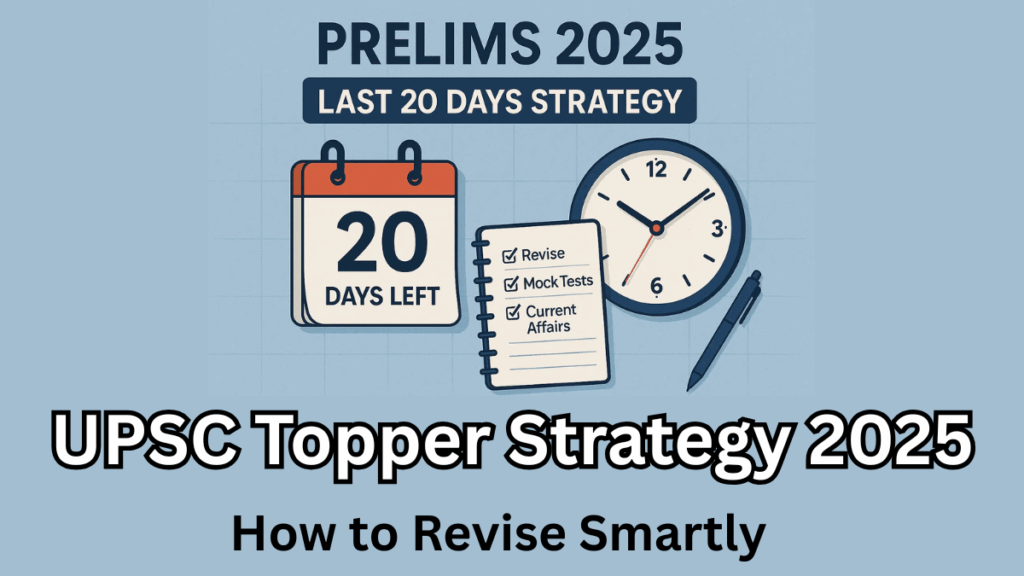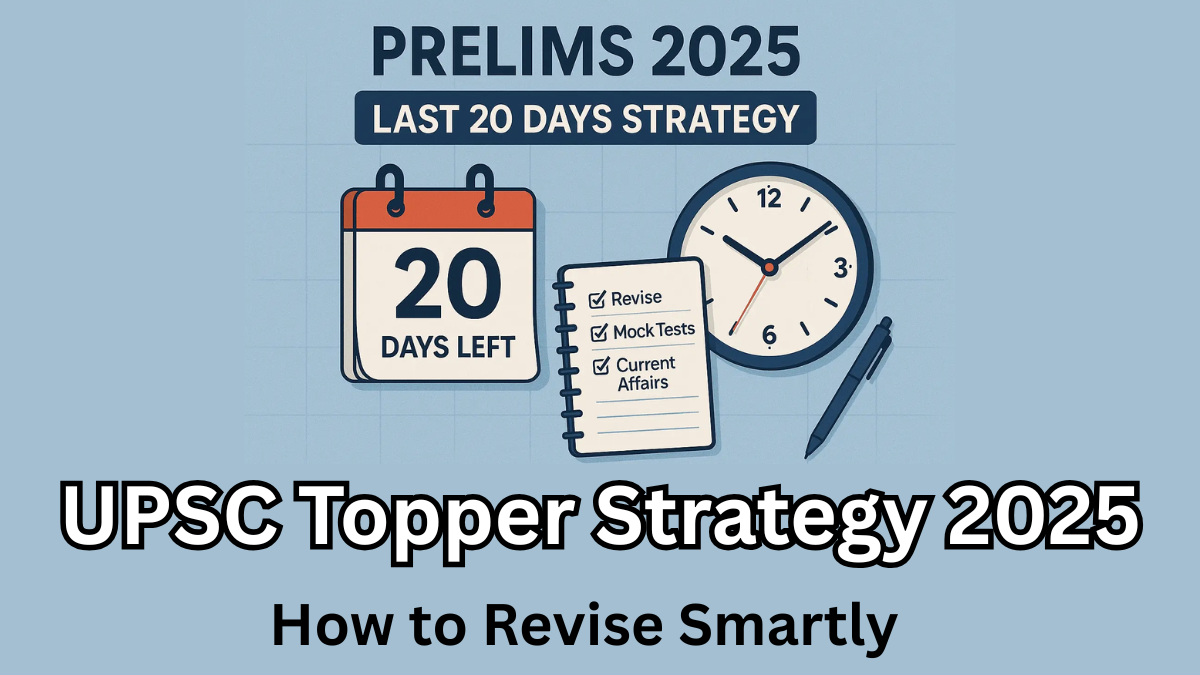Cracking the UPSC exam is no easy feat — it demands persistence, planning, and above all, smart revision. Many aspirants study hard but fail to consolidate what they’ve learned, which makes revision the game-changer. Let’s dive into an effective UPSC Topper Strategy for revision in 2025, ensuring that every hour you spend is productive and purposeful.

Why Smart Revision Matters
Revision is not just about rereading notes; it’s about reinforcing concepts, identifying gaps, and ensuring that you retain information for the long term.
A good Study plan 2025 should include:
-
Clear timelines for each subject
-
Multiple revision rounds
-
Practice through mock tests and previous year papers
-
Active recall techniques for better memory retention
Key Principles of Smart Revision
Revise in Layers
Instead of trying to grasp everything at once, revise in layers:
-
First layer: Basic understanding of topics
-
Second layer: In-depth study with additional resources
-
Third layer: Focus on answer-writing and recall-based practice
Use Active Recall
Passive reading doesn’t work for UPSC. Try:
-
Flashcards for quick recall
-
Writing answers to previous year’s questions
-
Teaching concepts to peers (or even to yourself aloud)
Follow the 3-3-3 Rule
This simple UPSC Topper Strategy for revision:
-
3 days: Revise short notes
-
3 weeks: Take subject-wise mock tests
-
3 months: Full syllabus revisions
Sample Study Plan 2025 for UPSC Revision
Here’s a practical timeline you can follow:
| Timeline | Task | Focus Area |
|---|---|---|
| Daily | 2–3 hours revision | Short notes, current affairs |
| Weekly | Take sectional mock tests | GS & Optional subjects |
| Monthly | Full-length tests | Mains & Prelims integration |
| Last 3 Months | Complete syllabus revision | High-yield topics & PYQs |
Subject-Wise Revision Tips
Polity & Governance
-
Use short notes and revise key articles from the Constitution.
-
Regularly practice previous year questions.
History & Culture
-
Focus on timelines and events.
-
Use mnemonics for remembering important dates.
Geography & Environment
-
Revise maps regularly.
-
Practice case studies on climate change and disasters.
Current Affairs
-
Integrate newspapers with static topics.
-
Make micro-notes for last-minute revisions.
UPSC Topper Strategy: Mock Tests & Analysis
Revision without testing yourself isn’t effective. Mock tests help in:
-
Evaluating progress
-
Identifying weak areas
-
Improving answer-writing speed
FAQs
How many revisions are ideal for UPSC preparation?
At least 3–4 full revisions are recommended before the exam to ensure strong retention.
Should I focus more on current affairs or static subjects?
Both are equally important. However, integrating current affairs with static topics makes your answers more holistic.
How many hours should I dedicate to revision daily?
On average, 2–3 hours daily for revision is sufficient alongside new learning.
Are mock tests important during revision?
Yes! Mock tests are essential to analyze your preparation, strengthen weak areas, and build exam temperament.
Click here to learn more
